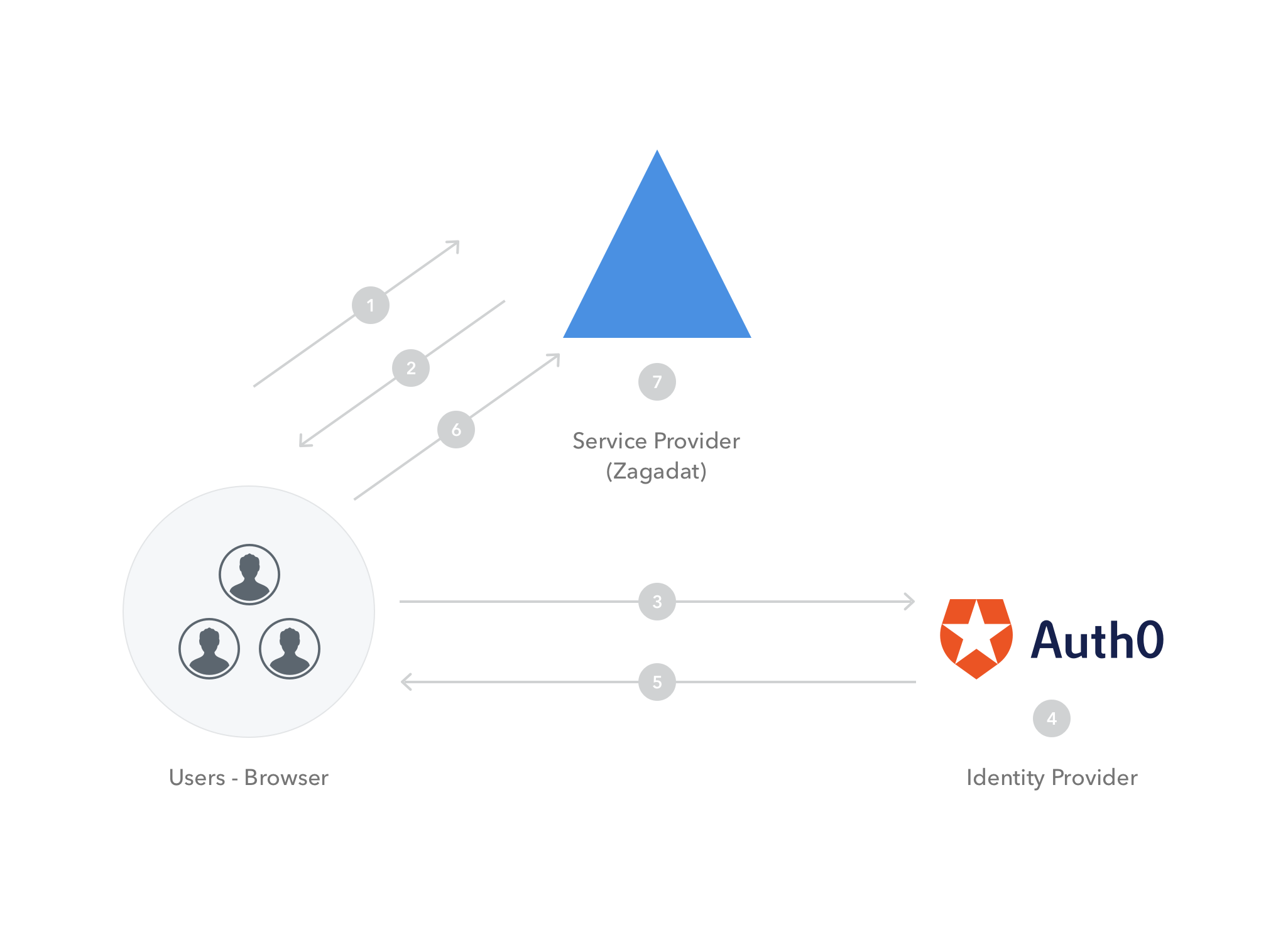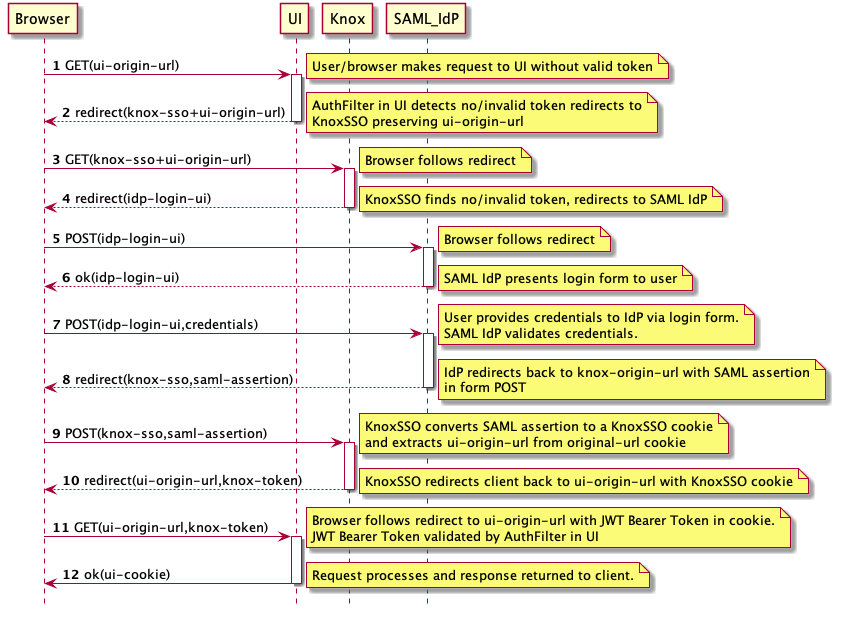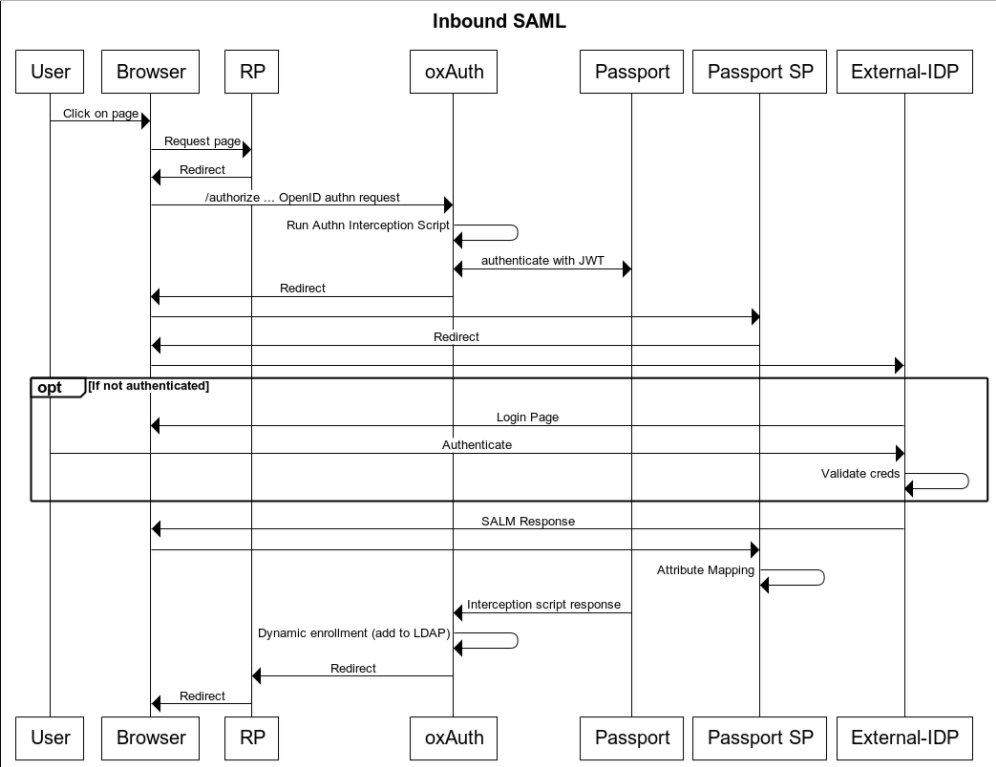

The Audience must match the UAA assertion consumer service URL. The Recipient must match the UAA entity ID. In the SAML assertion used in the SAML bearer token exchange, the Recipient and Audience must match UAA. The UAA allows for a token exchange permitting the upstream caller to get a UAA JSON web token (JWT), which authorizes access to hosted microservices, leveraging the SAML assertion mentioned above. In the SAML assertion, the recipient and audience must match UAA. The authenticated session against the IDP empowers the user to get a SAML assertion intended for the Single Sign‑On (also known as UAA) audience. The user has already authenticated against the enterprise IDP via SAML through interactions with the existing integration with the IDP upstream. The following describes the SAML bearer token exchange model:

The following sequence diagram illustrates the SAML bearer token exchange model: UAA then generates a JWT for the authenticated user. Your enterprise IDP applies any security policies defined by your corporate policy, for example, multi-factor authentication (MFA), Kerberos, or PKI certificates.īehind the scenes the UAA authenticates the user via SAML, because the user has a logged in session with the IDP. Because this user session with the IDP is already authenticated, the redirect back to UAA and then back to the micro-service is transparent to the user. The user/browser calling a micro-service is redirected to UAA and then to the IDP. The authenticated user’s session against the enterprise IDP is leveraged, which makes direct user authentication against the UAA transparent to the user.
#Saml sequence diagram code#
The following describes the UAA authorization code grant model: In that case, JWT ID tokens replace SAML and SAML assertions. The diagram above shows a SAML flow, but the interactions between the app, enterprise IDP, and UAA can also use an OIDC enterprise IDP. The following sequence diagram illustrates the UAA authorization code grant model: The following sections describe three authentication models that can be used for externally hosted apps using SAML or OIDC enterprise IDPs to call into APIs: The externally hosted app needs to invoke API-1 and API-2, which are Spring Boot microservices running on VMware Tanzu Application Service for VMs.ĪPI-1 and API-2 are protected by Single Sign‑On using OAuth. The externally hosted app is secured by an enterprise SAML or OIDC identity provider, that is, users authenticate using the SAML or OIDC provider into the externally hosted app. The following describes how externally hosted apps are protected by SAML:

The following diagram is a conceptual view of an externally hosted app protected by a SAML or OIDC enterprise identity provider (IDP): In these patterns, externally hosted apps, secured either by Security Assertion Markup Language (SAML) or by OpenID Connect (OIDC) providers using JSON Web Tokens (JWTs), interact with Single Sign‑On for VMware Tanzu Application Service to gain access to services. This section describes common architecture patterns for authenticating externally hosted apps that call APIs. After pipeline actions are executed, the outbound endpoint is closed.This topic describes common app architecture patterns for enterprise developers. Eventually the transport manager invokes the response pipeline. When a response comes in, the transport provider calls the TransportSendListener object. For example, for a JMS message, the transport provider uses the JMS API to populate the headers and the payload and calls the protocol-specific send operation. The transport provider then asks about the metadata and payload and other information and takes appropriate action. The transport provider creates an OutboundTransportMessageContext. TransportManager calls the transport provider to send the message. Next, the provider calls TransportManager (the central hub for the transport subsystem) to send the message asynchronously. The transport provider creates metadata for the request and creates a TransportSender object, which includes information about the payload and quality of service and retry information. The Service Bus runtime routes the message to an external service. The sequence diagram shown in this section describes the flow of outbound messages through the Service Bus runtime.


 0 kommentar(er)
0 kommentar(er)
